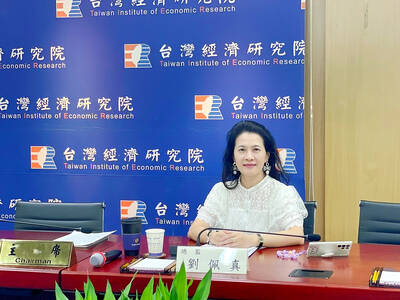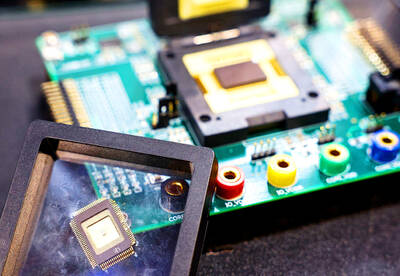Microsoft Corp may write flawed software, but it can take solace in the fact that the author of the "blaster" worm also makes mistakes.
And that error may be Microsoft's biggest weapon in fending off part two of the Internet attack that started Friday and is expected to continue into Saturday. The worm, which so far has infected more than 350,000 computers around the world, now aims to bring down Microsoft's Web site for software patches by flooding it with traffic.
The worm was already starting to have an effect in Asia and other parts of the world, said Gordon Johndroe, spokesman for the Department of Homeland Security. He urged home users and small and mid-sized businesses to download the patch.
The virus-like infection, also dubbed "LovSan" or "MSBlast," exploits a flaw in most current versions of Microsoft's Windows operating system for personal computers, laptops and server computers.
Although Microsoft posted a software patch to fix the flaw on July 16, many users failed to download the patch, leaving them vulnerable to the worm, which first started hitting computers around the world on Monday.
The worm caused computers to reboot frequently or disrupted users' browsing the Internet. But it also packed a second punch: starting at midnight local time on Aug. 16, infected computers that have not cleaned up the virus will in effect turn into a legion of zombies instructed to repeatedly call up a Microsoft Web site that houses the software patch. With so much traffic flooding the network, the site could be unreachable and computer users would be unable to access the patch.
Fatal flaw
But there's a flaw. The worm instructed computers to call up http://windowsupdate.com -- which is an incorrect address for reaching the actual Microsoft Web site that houses the software patch. Although Microsoft has long redirected those who visited that incorrect address to the real site -- http://windowsupdate.microsoft.com -- the company disabled the automatic redirection Thursday in preparation for the onslaught of infected computers.
Microsoft's real Web site should still be accessible to users, said Microsoft spokesman Sean Sundwall. However, those who don't know the correct address may be confused and believe that the so-called "denial of service" attack worked. The company is taking other measures to keep its site up and running, he said, although he declined to give specifics.
Microsoft's network and others around the country may still see a slowdown in Internet traffic simply from the volume of activity the worm is expected to generate from its legion of infected computers, said Vincent Weafer, senior director of security response for Symantec Corp, a security and antivirus company.
However, considering that Microsoft has disabled the automatic link from the incorrect Web site to the correct Web site, the worm's effects are "not going to be catastrophic," he said. "The Internet by itself is very resilient."
"It's a very simple and effective way of redirecting a denial of service attack into nowhere," he said.
A love note
The rate of new infections has slowed, he said. But computer users who still have not downloaded the patch need to do so, he said, adding that the company expects new infections to continue for as long as two years to come.
The worm left behind a love note on vulnerable computers: "I just want to say LOVE YOU SAN!"
It also carried a hidden message to taunt Microsoft's chairman: "Billy gates why do you make this possible? Stop making money and fix your software!"
Microsoft doesn't take the taunt personally, said Sundwall.
"Certainly we have had our naysayers in the past and I think those who have an ax to grind and happen to know how to write some code sometimes choose this mechanism to exhibit their frustration," he said.
Sundwall noted that Microsoft has been trying to make its software more secure, even before the "Trustworthy Computing" memo that Microsoft chairman Bill Gates sent last January, emphasizing the need for security and spawning months of training for developers on how to tighten up their code.
Despite that initiative, the flaw appeared in Windows Server 2003, the first new operating system to come out since the Trustworthy Computing campaign began.
Sundwall said there's more work to be done, and that Microsoft is looking for any ways to improve its security.
"Most people would agree while we have a long way to go ... we've come a long way," Sundwall said.

IN THE AIR: While most companies said they were committed to North American operations, some added that production and costs would depend on the outcome of a US trade probe Leading local contract electronics makers Wistron Corp (緯創), Quanta Computer Inc (廣達), Inventec Corp (英業達) and Compal Electronics Inc (仁寶) are to maintain their North American expansion plans, despite Washington’s 20 percent tariff on Taiwanese goods. Wistron said it has long maintained a presence in the US, while distributing production across Taiwan, North America, Southeast Asia and Europe. The company is in talks with customers to align capacity with their site preferences, a company official told the Taipei Times by telephone on Friday. The company is still in talks with clients over who would bear the tariff costs, with the outcome pending further

A proposed 100 percent tariff on chip imports announced by US President Donald Trump could shift more of Taiwan’s semiconductor production overseas, a Taiwan Institute of Economic Research (TIER) researcher said yesterday. Trump’s tariff policy will accelerate the global semiconductor industry’s pace to establish roots in the US, leading to higher supply chain costs and ultimately raising prices of consumer electronics and creating uncertainty for future market demand, Arisa Liu (劉佩真) at the institute’s Taiwan Industry Economics Database said in a telephone interview. Trump’s move signals his intention to "restore the glory of the US semiconductor industry," Liu noted, saying that

NEGOTIATIONS: Semiconductors play an outsized role in Taiwan’s industrial and economic development and are a major driver of the Taiwan-US trade imbalance With US President Donald Trump threatening to impose tariffs on semiconductors, Taiwan is expected to face a significant challenge, as information and communications technology (ICT) products account for more than 70 percent of its exports to the US, Chung-Hua Institution for Economic Research (CIER, 中華經濟研究院) president Lien Hsien-ming (連賢明) said on Friday. Compared with other countries, semiconductors play a disproportionately large role in Taiwan’s industrial and economic development, Lien said. As the sixth-largest contributor to the US trade deficit, Taiwan recorded a US$73.9 billion trade surplus with the US last year — up from US$47.8 billion in 2023 — driven by strong

STILL UNCLEAR: Several aspects of the policy still need to be clarified, such as whether the exemptions would expand to related products, PwC Taiwan warned The TAIEX surged yesterday, led by gains in Taiwan Semiconductor Manufacturing Co (TSMC, 台積電), after US President Donald Trump announced a sweeping 100 percent tariff on imported semiconductors — while exempting companies operating or building plants in the US, which includes TSMC. The benchmark index jumped 556.41 points, or 2.37 percent, to close at 24,003.77, breaching the 24,000-point level and hitting its highest close this year, Taiwan Stock Exchange (TWSE) data showed. TSMC rose NT$55, or 4.89 percent, to close at a record NT$1,180, as the company is already investing heavily in a multibillion-dollar plant in Arizona that led investors to assume